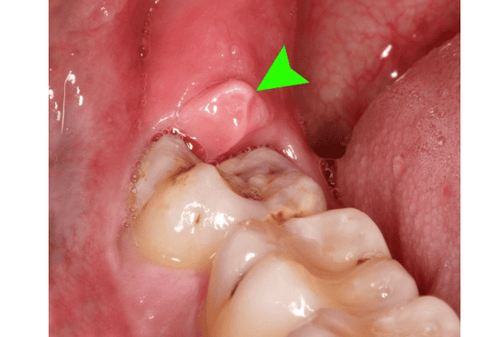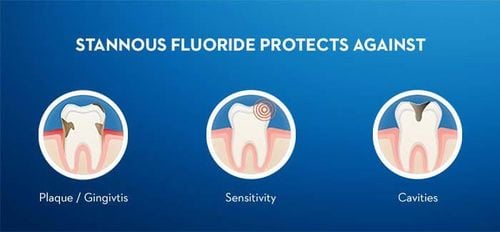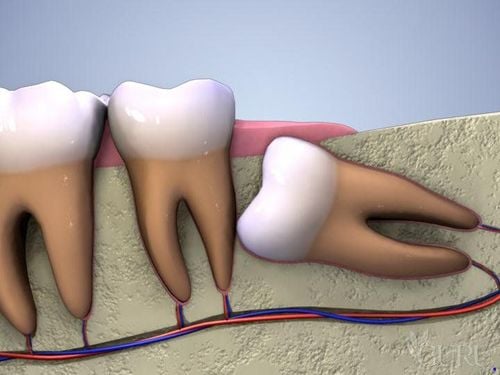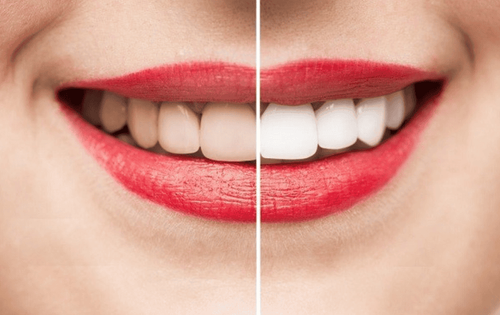This is an automatically translated article.
The article was professionally consulted by Doctor Department of Medical Examination & Internal Medicine - Vinmec Hai Phong International General Hospital. Dr. Hien has more than 12 years of experience in the field of Odonto-Stomatology, especially in the treatment of dental pathology, orthodontics and dental prosthetics.
Everyone has at least once experienced a painful wisdom tooth eruption. In addition to the inconveniences that wisdom teeth leave behind, we also have to endure many accompanying oral diseases, typically gum disease.
1. What is gingivitis?
Gingivitis is known as a type of dental disease, appearing during the wisdom tooth eruption. This is a condition in which the gum inside the jaw covers the wisdom tooth surface, making the wisdom tooth stuck and preventing the growth of the wisdom tooth. If not detected and treated promptly, gingivitis poses a great danger to oral health.
When suffering from gingivitis, the patient will feel very painful and uncomfortable, sometimes having a fever for several days. This painful condition will go on for a long time. Gingivitis is one of the complications caused by wisdom teeth eruption. Each of us has to go through the process of wisdom teeth eruption. After all molars have fully erupted, wisdom teeth begin to develop, it is the last tooth to erupt when we enter adulthood.
When you have gingivitis, food and drink particles will easily stick to and accumulate in between the gums and teeth. Cleaning teeth and gums at this time will be very difficult. When these food particles stick to the teeth for a long time, they will combine with the acids in the saliva to create bacteria that cause harmful infections to the teeth, causing swollen gums. It will then continue to affect the adjacent teeth.
To avoid gingivitis from causing dangerous complications, the patient needs to have a thorough investigation and go to the dental clinic to determine the status and extent of the disease.

2. Symptoms of gingivitis
Signs of gingivitis almost coincide with the signs of wisdom teeth. With the naked eye, we can detect bossing gingivitis.
The patient's gums are swollen at the very place where wisdom teeth erupt, red and painful. In some cases, the gums will ooze pus when pressed. When having gingivitis, the patient will have difficulty in eating, communicating, even opening the mouth will feel pain and difficulty.
Not only that, gingivitis can cause many inconveniences during the patient's life and work. When the disease is severe, the patient will have fever, malaise, fatigue and swollen lymph nodes in the neck. If left untreated, the disease will recur over a long period of time.
3. How to treat gingivitis?
When you go to the dentist, depending on the patient's condition, the dentist will offer measures to help the patient get rid of the inconvenience caused by the disease.
After the specific examination process is to conduct X-rays to determine the position of the teeth, the dentist will tell you about your disease status and offer solutions. With the advancement of medicine today, especially in the field of Odonto-Stomatology, dentists will offer some effective treatment measures for gingivitis.
Cutting gums: After taking X-rays, if the dentist finds that your wisdom teeth are growing in an aligned position compared to other teeth, that is, wisdom teeth are not misaligned, overlapping other teeth, then Treatment will be to remove the dominant gingiva. This is considered a rather fortunate case for the patient.
The steps to perform when cutting the gums are:
The doctor numbs the gums After that, cut the gums so that the wisdom teeth continue to develop normally The patient needs to use sterilization methods. Keep the oral cavity clean, prevent bacteria from entering and causing re-inflammation. Cutting the gum without a machine is difficult but there is a risk of recurrence, so when it comes back, the doctor may consider recommending that you remove the wisdom tooth.
However, in the case if the wisdom teeth are misaligned, grow abnormally, then cutting the gums is not effective. Because when removing the gum, it will still cause other dangerous inflammatory complications such as: gingivitis, tooth decay, pulpitis, affecting the surrounding tooth structure. The method recommended by experts at this time is to remove that wisdom tooth.

The Department of Dentistry - Jaw - Facial, Vinmec International General Hospital is one of the major and important sub-disciplines of the clinical block. Is a specialty in charge of intensive and aesthetic pathological treatment of the entire tooth structure (teeth, bone, pulp,...), jaw (palatine, jawline, jaw joint, ...) and face (frontal bone, cheekbone, temporal bone,...).
Why should you choose to visit the Odonto-Stomatology Specialist - Vinmec International General Hospital?
Simple and quick procedure. Enthusiastic advice and support, reasonable and convenient examination process. Comprehensive facilities, including a system of clinics and consultations, blood collection room, dining room, waiting area for customers... The medical staff has high professional qualifications, style. Professional, caring way of working.
Please dial HOTLINE for more information or register for an appointment HERE. Download MyVinmec app to make appointments faster and to manage your bookings easily.













